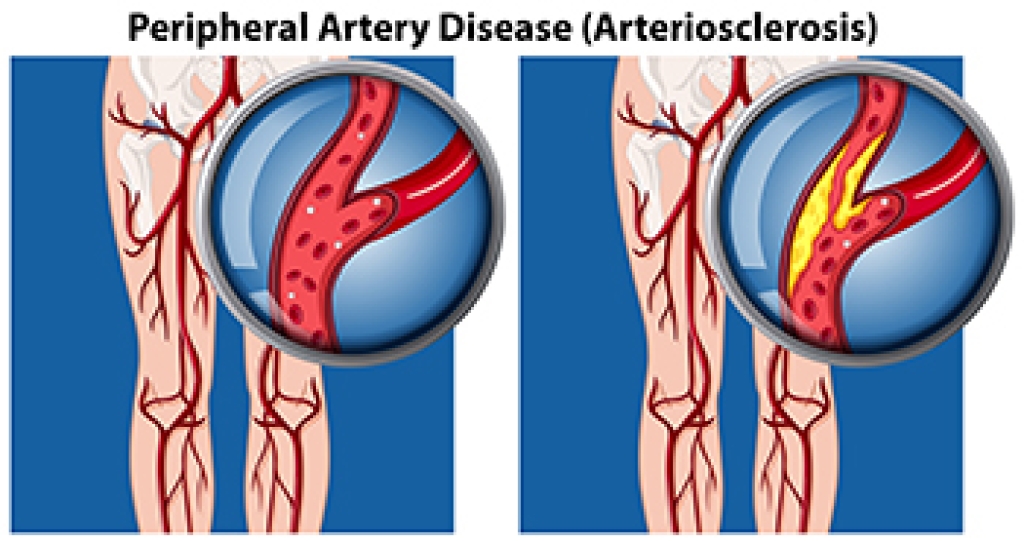
Peripheral artery disease, or PAD, is a serious condition where narrowed arteries limit blood flow to the limbs, and especially affects the feet. People with peripheral artery disease may experience a persistent cold sensation in their feet, even in warm environments, due to restricted blood circulation. Tingling, numbness, or loss of sensation, especially in the toes, can signal nerve strain caused by reduced oxygen supply. Additionally, skin on the feet may turn pale or develop a bluish tint as circulation diminishes. Peripheral artery disease can also slow toenail growth, leading to thicker, brittle nails that may appear discolored. In advanced cases, patients with PAD might develop painful sores or ulcers on the feet that are slow to heal, increasing the risk of infection and severe complications. A podiatrist can identify signs of peripheral artery disease and help patients manage foot health. If you have foot pain that derives from circulatory issues, it is suggested that you make an appointment with a podiatrist for appropriate treatment.
Peripheral artery disease can pose a serious risk to your health. It can increase the risk of stroke and heart attack. If you have symptoms of peripheral artery disease, consult with one of our podiatrists from Premier Ankle & Foot Specialists. Our doctors will assess your condition and provide you with quality foot and ankle treatment.
Peripheral artery disease (PAD) is when arteries are constricted due to plaque (fatty deposits) build-up. This results in less blood flow to the legs and other extremities. The main cause of PAD is atherosclerosis, in which plaque builds up in the arteries.
Symptoms
Symptoms of PAD include:
- Claudication (leg pain from walking)
- Numbness in legs
- Decrease in growth of leg hair and toenails
- Paleness of the skin
- Erectile dysfunction
- Sores and wounds on legs and feet that won’t heal
- Coldness in one leg
It is important to note that a majority of individuals never show any symptoms of PAD.
Diagnosis
While PAD occurs in the legs and arteries, Podiatrists can diagnose PAD. Podiatrists utilize a test called an ankle-brachial index (ABI). An ABI test compares blood pressure in your arm to you ankle to see if any abnormality occurs. Ultrasound and imaging devices may also be used.
Treatment
Fortunately, lifestyle changes such as maintaining a healthy diet, exercising, managing cholesterol and blood sugar levels, and quitting smoking, can all treat PAD. Medications that prevent clots from occurring can be prescribed. Finally, in some cases, surgery may be recommended.
If you have any questions, please feel free to contact our offices located in South York, West York, and East York, PA . We offer the newest diagnostic and treatment technologies for all your foot care needs.




